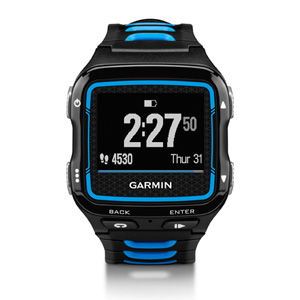We all might not be able to race like Timothy O’Donnell, but we now can get the same training feedback. Garmin is just about to release their newest I-can’t-believe-they-fit-all-that-in-a-watch GPS. Meet the new Forerunner 920XT. This is a huge upgrade on the popular 910, the first multisport GPS watch on the market. The newest generation still has all the same great multisport functions, but with added swim and run metrics, plus an insanely long battery life that can now last for a long Ironman or 100mile ultra race.
While running, the 920xt calculates your basic speed and distance as usual, but throws in cadence count, vertical oscillation, wear on your body (so it can calculate recovery), and even measures approximate V02 max. Combine that with more ability to customize workouts and the dozens of hidden Garmin features (virtual pacer, target pace, etc.) and it’s hard to pass up. And that’s just the running portion.
But it also has improved swim metrics. The 920 is able to measure stroke rate, stroke count and SWOLF score. Garmin did not forget about cycling either. The watch functions as a bike computer and has a quick release system for easy placement on handlebars.
Early this year Garmin released the fenix 2, which has many of the same functions. Two of us in the office have been sporting the fenix for all our activities this summer and have loved it, but are seriously considering the 920. The battery life on the 920 lasts longer in basic GPS mode than any other watch on the market (24 hours) and is much lighter than the fenix. If nothing else, the colors on the 920 make it more appealing. All-in-all the slimmer 920 seems more practical in most situations than the fenix 2.
For the multisport athlete this is the ultimate watch. It transitions from the water to the bike, and bike to run as seamlessly as you do, but also looks good as a daily wristwatch. Why wear anything else?
